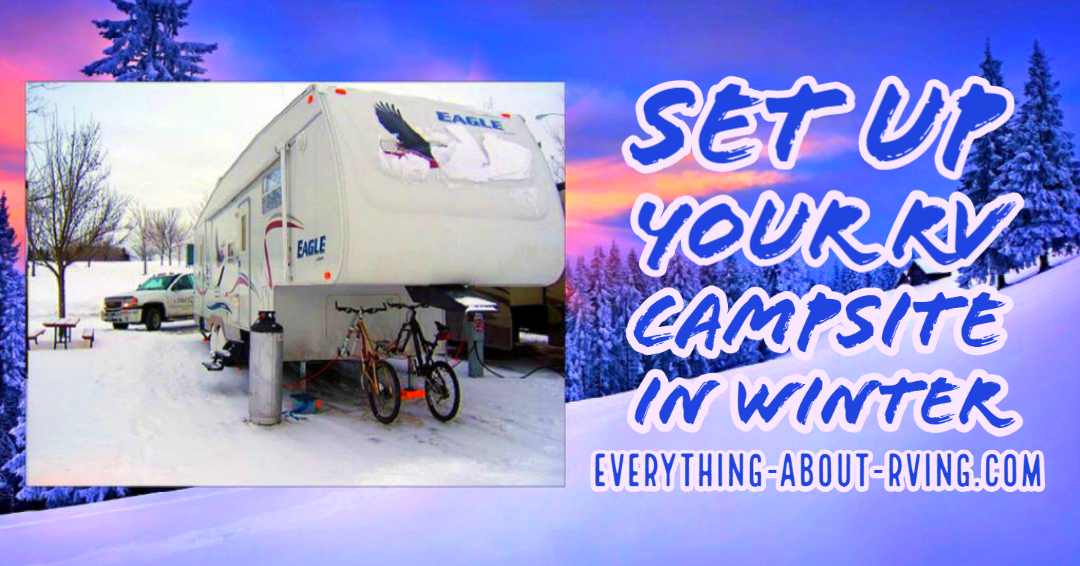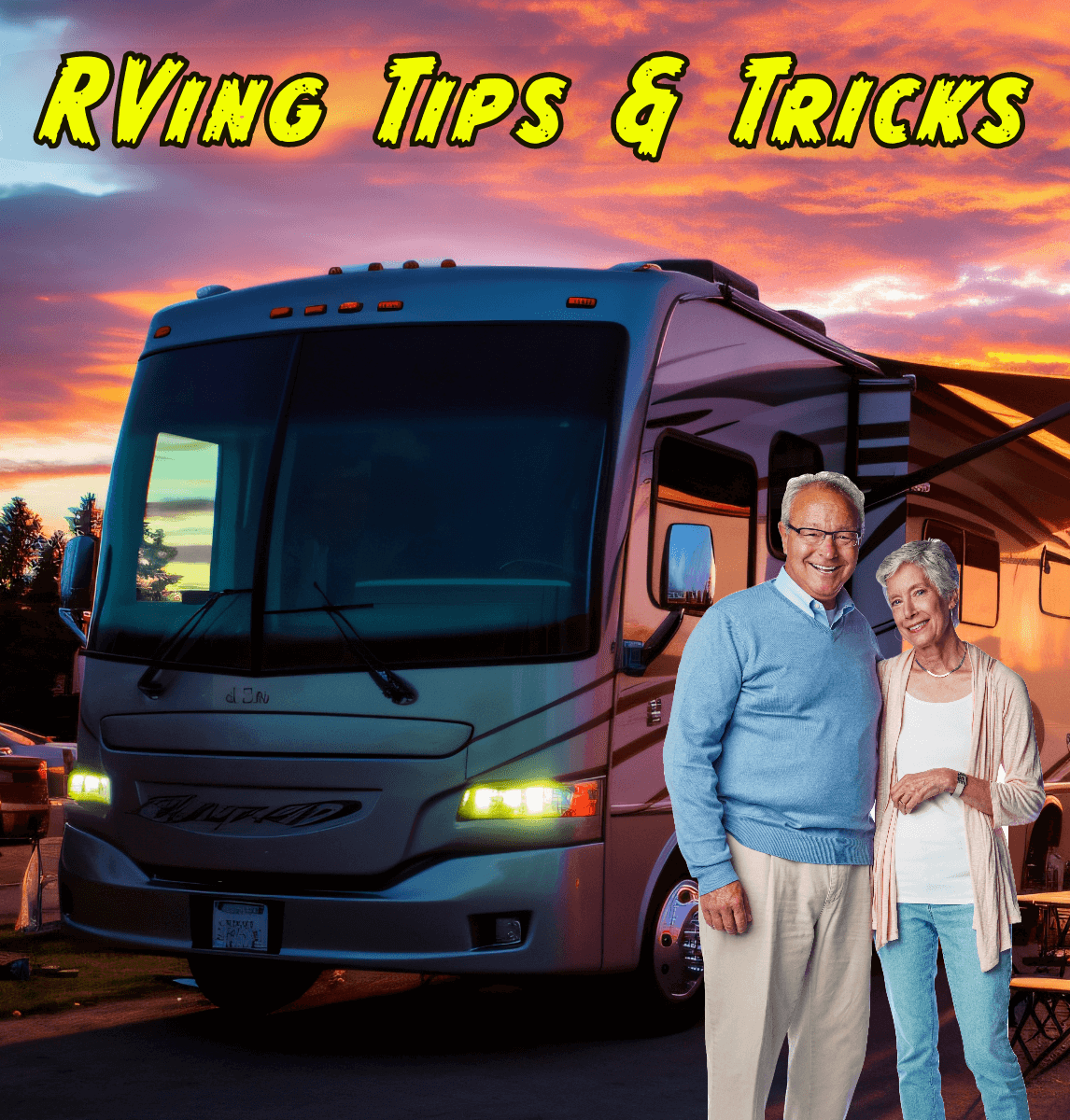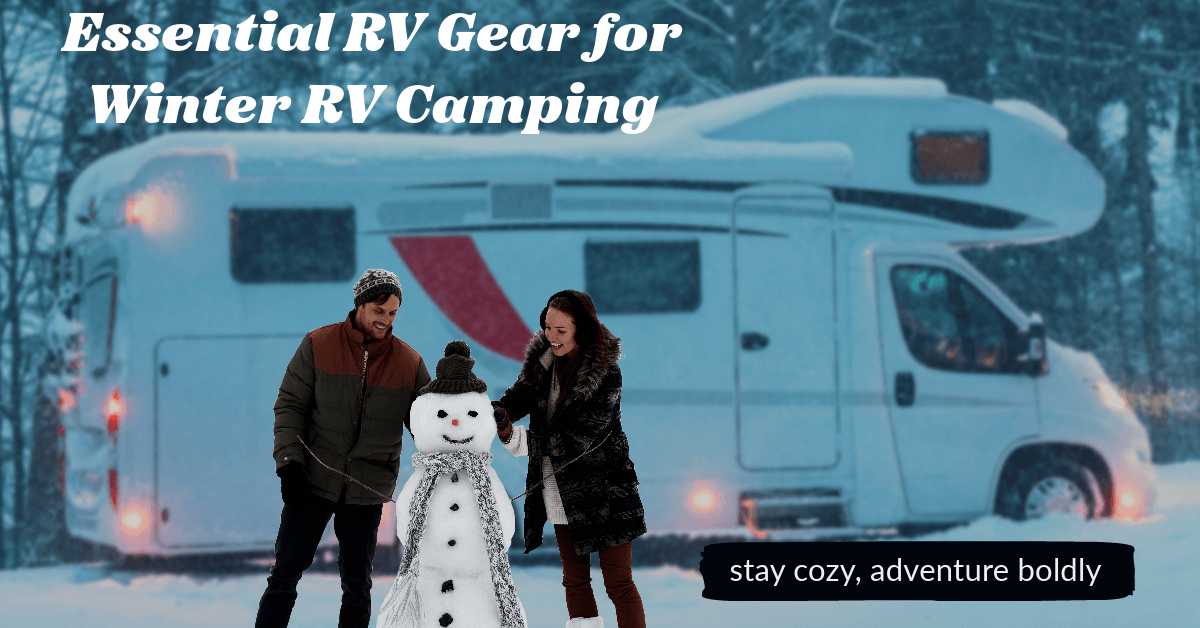- Home Page
- RVing Tips & Tricks
- Campsite in Winter
How to Set Up Your RV Campsite in Winter
Winter RV camping can be the most exciting
By
Steven Rausch
The days are getting shorter and the temperatures are falling but that shouldn't prevent you from enjoying RV camping. Believe it or not, RV camping in winter is a thing and can often be more exciting than RV camping in summer.
There are various reasons to go RV camping in winters – the camps are empty, the air is crisp, the landscape is serene, and there are no bugs. Yes, it is going to be cold but that’s the fun of camping in winter.
You will feel the breeze stroking your cheeks as you sip a hot cup of cocoa. The only thing you need to take care of is to set up your RV and campsite, since it can be a little tricky in winters.
Let’s find out how:
How to Prepare Your RV
The first step is to prepare your RV. The vehicle must be able to handle the weather. Most RVs are insulated hence it will not be a problem to go camping. But, if yours isn't then consider adding insulation to make your trailer cozy.
First Comes Exterior
Pay attention to both the interior and exterior of the RV. The tires, for example, must be properly inflated and able to handle the snow. If you need to add chains or take other such steps then do it before you take out. We must also mention that not all tires are suitable for winters.
Pay special attention to the exterior of the vehicle. Have a look at the windows and ensure they are properly sealed. Re-caulk if needed. The weather stripping on all access panels, doors, and basement areas must be properly placed. If not, then consider a replacement to keep cold at bay.
It may be a good idea to buy insulating foam boards and cut them to fit between the ground and RV frame all the way around the base. This will improve insulation by keeping the floor, water lines, and tanks insulated.
RV skirts may also help but they are not very effective in insulating areas.
Taking Care of the Pump and Hose
If you do not insulate the water pump then it may get a little difficult to get access to water since the tank may freeze due to the weather. The best option is to use a small space heater. However, it may not be necessary if the tank isn’t located outside.
Next, it is time to have a look at the water hose. Make sure to invest in a hose that can handle extreme temperatures without bursting. Heated water hoses can prevent freeze-ups as they come with a thermostat. They, however, need AC power to operate.
You must be careful with the cables and hoses. Make sure to keep them out of the snow and off the ground. You can also opt to fill the tank and then disconnect the hose from the faucet to let the water drain out.
Something About Holding Tanks
If you want to have an enjoyable trip then empty your gray and black water tanks before you take off. Add about a quart of RV antifreeze (special, pink kind for RVs) to each tank to protect the dump valves from the cold.
Consider insulating the pipes and adding electric pipe heaters if you expect the temperatures to be extreme. These heaters work well but you will need to invest in a generator or hook-up for them to work. If that isn't possible then opt for holding tank heaters. They're available in 120V AC and 12V DC models.
It isn't uncommon for ice dams to form inside the sewer hose. An effective way to prevent this is to wrap the hose in heat tape or insulation. Some experts also suggest to only use the sewer hose to dump and to keep it stored when not in use. It’s very important to be careful because a frozen hose will split if removed.
Tip: Do not empty the tanks until it's time to leave.
Special Care for Windows and Vents
Dual pane windows can be difficult to deal with. If you do not have those then consider retrofitting or adding insulated curtains.
The windows should be kept closed, especially at night, to ensure warm air stays trapped in. You can also opt for an insulated curtain designed to separate the living area from the cockpit. This will reduce the area you need to heat, which will help save electricity or propane.
Though effective, this option can be quite costly. If you're low on budget then you can opt to use foil backed foam insulation to cover the windows on the inside. Another option is a window insulating film that can reduce condensation and prevent heat loss.
Next comes skylights or roof vents. The best option is to seal off these by installing vent cushions made for RVs. They fit snugly into most vents and are easy to install. All that you need to do is push them up into position.
If you do not want to spend money on them or if you enjoy DIY tricks then you can use thick foam padding to make your own cushions.
Don't Miss New Year Savings! Good Sam Travel Assist Plans Starting at $59.95! Learn More!
Checking Stabilizing Jacks
Stabilizing jacks need your attention since they can freeze to concrete or paved pads.
The best way to protect them is to place wooden blocks beneath them. This will raise the jacks, after it, you can drive forward and then free the blocks with a hammer, a chisel, and ice melt.
If this is too much effort then you can opt to leave the blocks and get a replacement later.
Ensuring the Refrigerant Works Well
The refrigerant is a solution of distilled water, sodium carbonate, ammonia, and hydrogen gas. This liquid loses its shape when the temperature goes below 20F and turns into a gel that can be bad for the system.
The best way to avoid this is to use duct tape to cover two of the three vent slots. If duct tape is not available then you can use pipe insulation. Insert it into the vents and the job will be done.
Last Comes The Furnace
Clear the furnace area by using a soft brush or compressed air to get rid of insects, debris, and dust. You need to pay special attention to the furnace since they do not work well when the temperature goes below 40F.
You can opt to run a catalytic heater or portable space heater if you do not want to use the furnace. However, you will have to open a small crack to ensure ventilation.
Goods for Comfort
RV Parts and Accessories on Sale Now
Now that your RV is ready, it is time to take care of comfort. Make sure to include the following to ensure your trip goes well:
• Extra blankets
• Extra GPS system
• Cash
• Solar panels to recharge house batteries
• Camping stove
• Extra food
• GPS system for emergencies
• Blow dryer
• Propane tanks to be on the safe side
• Gasoline generator
• Drinking water
• Warm clothing
• Weather band radio’
How to Set Up Your RV Campsite in Winter: Conclusion
This is all you need to know to set up your RV campsite in winter. Drive your vehicle before you go out and make sure to ensure the campsite is available.
About The Author
Steven
is an avid outdoors-man and a lover of everything about tires and cars,
especially RVs. If you're looking for tires
for your car,
or your RV, check out The Tires Deets.
Do you have any suggestions or comments on this topic? You can add them to this page by using the comments section located below.




